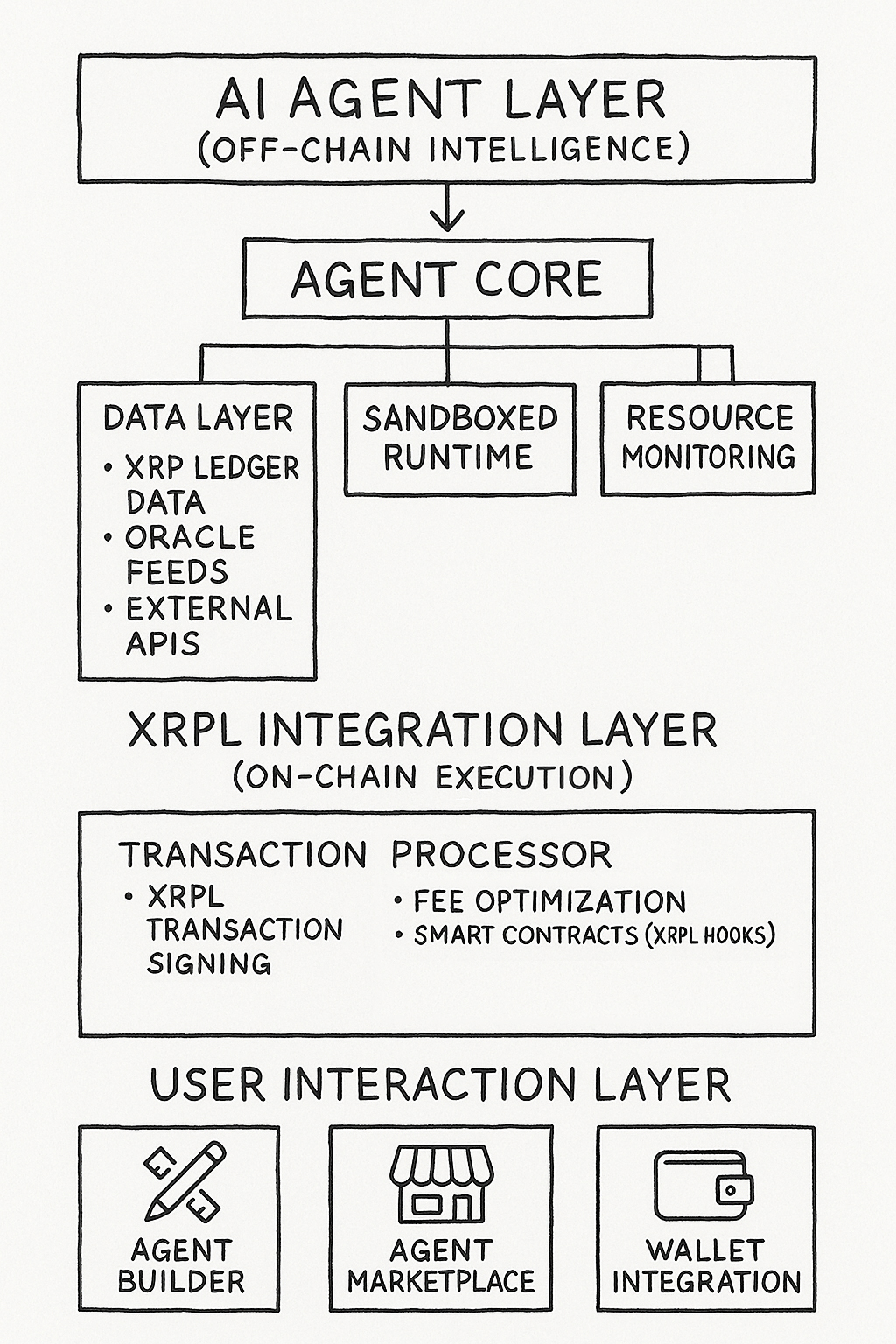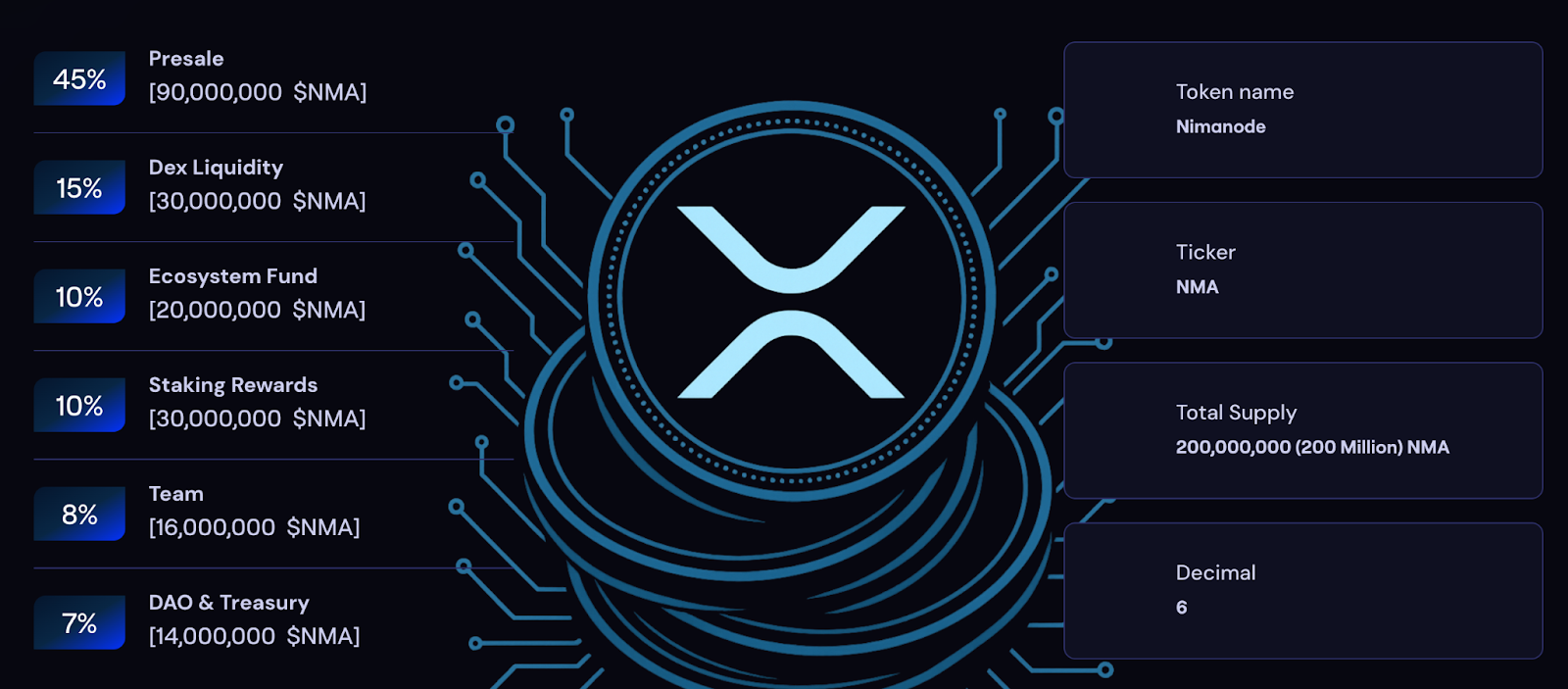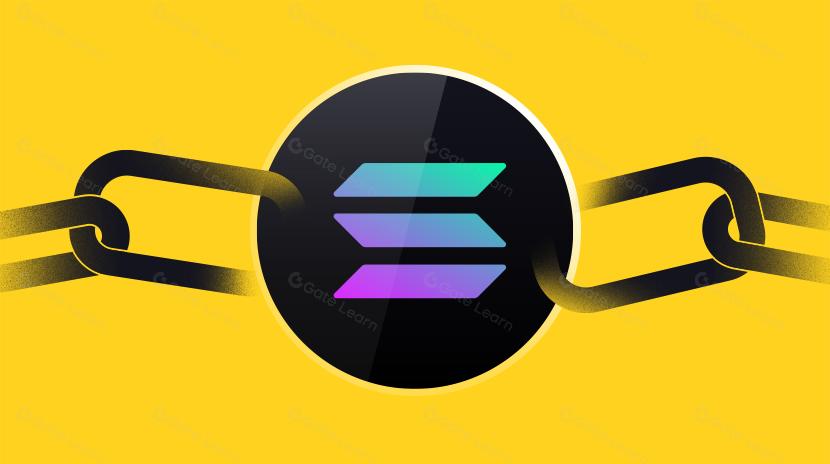What is NimaNode?
Introduction
NimaNode is a blockchain-based platform that allows users to create and deploy AI agents that operate autonomously on-chain. Built on the XRP Ledger (XRPL), it uses a no-code interface to make advanced automation tools accessible to both technical and non-technical users.
The platform is designed to support a wide range of Web3 use cases using AI, including smart contract generation, DeFi strategy management, compliance automation, and real-time support. These agents interact with on-chain assets, smart contract logic, and external APIs.
NimaNode represents a shift toward AI-native infrastructure in the blockchain space. By offering an execution layer that runs on XRPL with low fees, high throughput, and built-in logic through XRPL Hooks, it introduces a native token ($NMA) to power its operations, including agent deployment, upgrades, governance, and staking.
Compared to similar platforms like Autonolas or Fetch.ai, which also explore autonomous agent infrastructure, NimaNode stands out with its focus on no-code accessibility, direct integration with the XRP Ledger, and use of XRPL Hooks for secure on-chain logic execution. While other projects often require custom networks or complex deployments, NimaNode leverages XRPL’s low fees and high throughput to enable lightweight, modular agents that interact seamlessly with Web3 ecosystems. This makes it especially appealing for non-developers and enterprises seeking rapid, low-cost AI automation in blockchain environments.
What is NimaNode
NimaNode is a decentralized platform that enables users to build and deploy autonomous AI agents directly on the XRP Ledger. These agents are designed to perform tasks without manual oversight, such as executing smart contracts, rebalancing DeFi portfolios, or answering support requests.
At its core, NimaNode offers a no-code agent builder for users who don’t code, and an SDK for developers who want to build more customized logic. Agents can be trained, deployed, and monitored through a modular system that allows for task-specific customization.
Using XRPL Hooks, these agents can run securely on-chain, reacting to blockchain events, managing logic, and interacting with both on-chain and off-chain systems. NimaNode aims to make AI agents a routine component of decentralized operations across Web3 applications.
History of NimaNode, Origins, and Key Persons
NimaNode officially launched in May 2025 as the first AI-agent automation platform built on the XRP Ledger. Its goal from the beginning was to simplify AI deployment in Web3 and lower the technical barrier to creating autonomous blockchain-based tools.
The project is based in Leeds, United Kingdom. While the core team has not been publicly named, official releases indicate they have prior experience in AI systems and blockchain development. Their early focus on XRPL was strategic—allowing them to offer scalable, low-fee execution for AI logic.
NimaNode’s launch was accompanied by the $NMA token presale, which attracted crypto investors from ecosystems such as BNB Chain, Cardano, and Solana. This early support was based on interest in the platform’s infrastructure model, which offered AI tools as reusable agents rather than static applications.
How Does NimaNode Work?
AI Agents and Their Workflow

NimaNode allows users to deploy AI agents that follow a structured workflow: creation, optional training, deployment on-chain, real-time execution, and monitoring. Users can build agents through a no-code interface or code them using the developer SDK.
Built on the XRP Ledger
The platform relies on XRPL Hooks to run logic on-chain. Hooks are lightweight programs attached to XRPL accounts, enabling NimaNode agents to act on triggers like transactions or external data without relying on traditional smart contracts. This ensures faster, cheaper, and more efficient automation.
Runtime and Data Access
Agents operate through a controlled runtime that ensures secure, predictable behavior. They can pull data from APIs and oracles, allowing for real-world responsiveness. For instance, agents can adjust DeFi allocations based on yield updates or respond to user queries using live data.
Tools for All Users
NimaNode supports a range of users. Non-developers can use the no-code builder to configure workflows, while developers can use the SDK to create complex logic or integrate with external systems. A dashboard allows users to track agent performance and update behavior as needed.
Modular and Interoperable
Agents are modular and reusable. They can be combined with other agents, adapted to different protocols, and eventually shared or monetized through a future marketplace. This design allows NimaNode to support a growing ecosystem of interoperable automation tools.
Key Features of NimaNode
No-Code Agent Builder
NimaNode provides a visual interface that allows users to build AI agents without writing code. The builder uses a drag-and-drop workflow format where users define inputs, triggers, logic, and outputs. This feature makes agent creation accessible to users with no programming experience, including DAOs, small teams, and individual creators.
XRPL Hook-Based Execution
The platform is built on the XRP Ledger (XRPL) and utilizes XRPL Hooks, which are small logic scripts that operate natively on XRPL accounts. These Hooks allow AI agents to interact directly with the ledger, enabling them to read and write data, trigger actions, and execute rules efficiently and securely.
Unlike traditional smart contracts, Hooks are lightweight and cost-effective, making them suitable for high-frequency, AI-driven automation.
Modular AI Agent Runtime
NimaNode includes a runtime environment that manages agent execution. This environment supports modularity, meaning agents can be upgraded, reused, or combined with other agents. It ensures consistent execution and allows agents to handle multiple types of tasks based on their assigned logic.
The runtime also includes built-in scheduling and decision-making tools, enabling agents to act in response to time-based or event-based triggers.
External Data Integration
NimaNode agents can connect to external APIs and oracles, allowing them to use off-chain data for decision-making. This feature enables real-world use cases such as:
- Monitoring token prices for automated DeFi strategies
- Verifying user identity or compliance status
- Responding to incoming customer queries with real-time data
By combining blockchain execution with real-world data, agents can function more intelligently and adapt to dynamic environments.
Developer SDK and API Access
For advanced users, NimaNode offers SDKs and APIs that provide full control over agent design and deployment. Developers can create custom workflows, integrate their own data sources, and tailor agent logic to complex requirements. This makes the platform suitable for both enterprise-level applications and independent builders looking to develop specialized agents.
Agent Marketplace
According to the roadmap, NimaNode is developing an agent marketplace where users can publish, license, or reuse agents built by others. This marketplace will allow users to:
- Deploy pre-built agents for common tasks
- Monetize their own AI agent designs
- Customize and combine agents for specific needs
Token-Gated Access and Features
Certain platform functions—such as agent deployment, upgrades, and priority execution—are gated by the $NMA token. This allows NimaNode to manage system resources, prevent spam, and offer premium services to token holders.
Token gating also supports the platform’s governance and staking mechanisms, which are covered in later sections.
Is $NMA a Good Investment?
The $NMA token has direct utility in the platform, serving as the payment method for deploying and upgrading agents, staking, governance, and marketplace interactions. As more users join the ecosystem and deploy agents, demand for the token could increase.
That said, $NMA is still in its early stages. Adoption of the platform will ultimately determine token demand and value. The team has not yet disclosed lock-up schedules or vesting conditions for team or advisor allocations, which are key investment considerations.
Investors should also account for risks common to early-stage crypto projects—such as low liquidity at launch, development delays, and market volatility. While the project has clear utility, long-term value will depend on user growth and execution of the roadmap.
How Can You Own $NMA
Currently, $NMA is available through the official presale hosted on NimaNode’s website. Participants can purchase the token using XRP at a fixed rate of 1 XRP = 450 NMA, with a minimum entry of 250 XRP. The public listing price is expected to be 25% higher than the presale rate.
After the presale ends, $NMA is expected to be listed on crypto exchanges. At that stage, users will be able to acquire tokens through standard trading pairs.
In the future, users may also be able to earn tokens by staking or participating in platform activities, although those mechanisms are not live yet.
Tokenomics of $NMA

The total supply of $NMA is capped at 200 million tokens. Distribution is broken down as follows:
- 45% allocated to the public presale
- 10% reserved for staking and community rewards
- 8% allocated to the team and advisors
- 10% set aside for ecosystem and partner development
- 15% allocated for exchange liquidity
- 7% reserved for treasury and ongoing development
The token is used for multiple purposes: deploying agents, accessing premium features, governance, and staking. All platform interactions are tied to $NMA, which helps establish a continuous demand cycle as more agents are deployed and used.
Details on token lock-ups, vesting schedules, or emission controls have not yet been shared. This is an important area for users and investors to monitor.
Roadmap of NimaNode
Q2 2025: Platform and Token Launch
The project began with the launch of its website, social media channels, and community-building campaigns. This phase also included the $NMA Token Generation Event and the start of the presale, introducing the token to early supporters.
Q3 2025: Listings and Developer Access
In Q3, NimaNode will focus on increasing visibility through CoinGecko and CoinMarketCap listings, along with a DEX launch. A prototype of the no-code interface will be released, and developer onboarding programs will begin to grow the builder ecosystem.
Q4 2025: Testing and Governance
The zero-code interface will move into beta testing, with user feedback guiding improvements. $NMA governance will be introduced, and a CEX listing is planned to expand token accessibility.
Q1 2026: Expansion and Marketplace Launch
NimaNode will explore institutional partnerships and begin research on AgentMesh, a protocol for agent collaboration. Cross-chain integration efforts will start, and the AI Agent Marketplace will officially launch.
Conclusion
NimaNode introduces a practical way to use AI in blockchain environments. With its no-code agent builder, modular architecture, and on-chain automation features, it makes AI accessible to a broader range of Web3 users.
The platform’s success will depend on adoption, agent utility, and execution of its roadmap. The $NMA token is deeply integrated into platform activity and has strong utility, though key investment details such as vesting remain to be confirmed.
If the platform can deliver on its vision, NimaNode could become a foundational layer for AI-agent automation in crypto.
Related Articles

Crypto World’s New Favorite: AI Agent Tokens

In-depth Explanation of Yala: Building a Modular DeFi Yield Aggregator with $YU Stablecoin as a Medium

The Future of Cross-Chain Bridges: Full-Chain Interoperability Becomes Inevitable, Liquidity Bridges Will Decline

Solana Need L2s And Appchains?

Sui: How are users leveraging its speed, security, & scalability?


